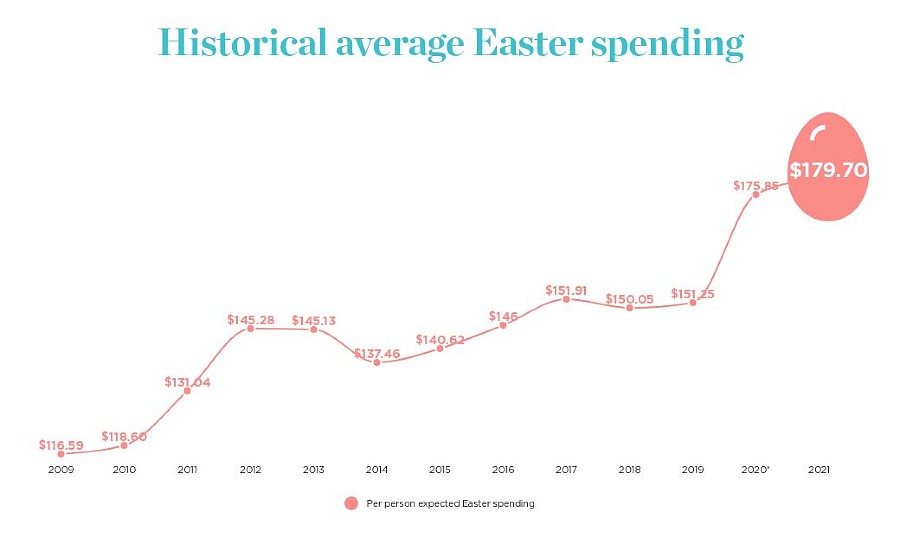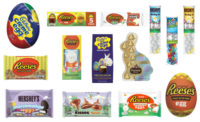One year into COVID-19, U.S. consumers projected to spend $21B on Easter
Consumers are expected to drop $3B on candy.

Source: NRF's 2021 Easter Spending survey, conducted by Prosper Insights & Analytics. Graphic by the National Retail Federation.
U.S. consumers are expected to shell out the most they ever have for Easter, according to new survey results from the National Retail Federation and Prosper Insights & Analytics.
On average, consumers are expected to spend $179.70 on Easter festivities, a record for the 13 years the federation has conducted the survey. That’s up from $175.85 in 2020.
The NRF noted it didn’t release last year’s Easter survey, which was conducted in March 2020, before government-mandated closures took effect. Those results reflected pre-pandemic plans.
“With new stimulus funds from the President’s American Rescue Plan, positive trends in vaccinations and growing consumer confidence, there is a lot of momentum heading into the spring and holiday events like Easter,” said NRF President and CEO Matthew Shay. “Many have figured out how to celebrate holidays safely with family and that is reflected in consumer spending this Easter.”
Total spending is projected to reach $21.6 billion, a slight dip from the $21.7 billion projected in 2020. Spending on candy — a main component of the holiday — is expected to hit $3.04 billion, up from $2.88 billion in 2020. And as predicted last year, consumers are expected to spend more than $6 billion on food.
Just under 80 percent (79 percent) of consumers say they plan to observe Easter, with 89 percent of them planning to buy candy and 88 percent planning to buy food. Nearly two-thirds (64 percent) plan to buy gifts, while half plan to buy greeting cards (50 percent) and decorations (48 percent).
Half of consumers (48 percent) say they will shop for Easter goods at discount stores, while 35 percent will visit department stores. Just under a fifth (23 percent) will go to a specialty store or a small business or local store (23 percent).
Just over a third (35 percent) will make purchases online — the highest in survey history — up from the 28 percent predicted last year.
Easter sales aren’t reserved for the weeks leading up to the holiday. Though not all consumers say they’ll observe Easter, more than half (52 percent) of those who don’t celebrate plan to take advantage of post-holiday deals and expect to spend an average of $21.11, up from $17.64 in 2020. The most popular item is candy, which respondents have shown transcends across age, gender and disposable incomes.
The survey of 8,111 consumers was conducted March 1-8 and has a margin of error of plus or minus 1.1 percentage points.
Looking for a reprint of this article?
From high-res PDFs to custom plaques, order your copy today!





